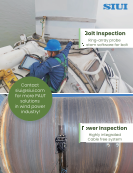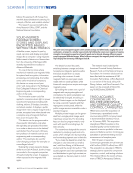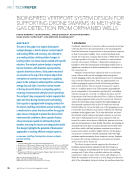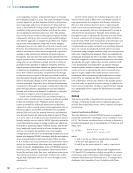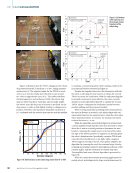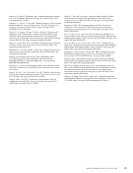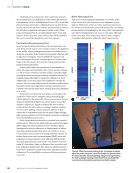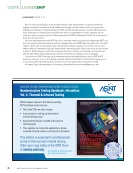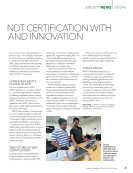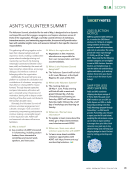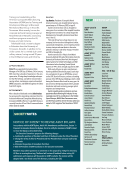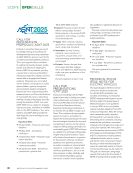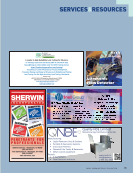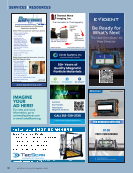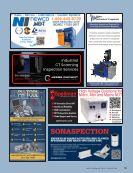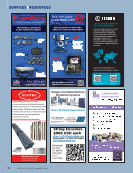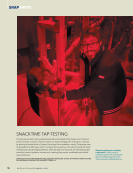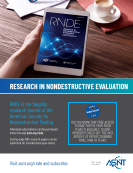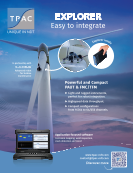ABSTR ACT
This research proposes a motion planning
framework for a robot equipped with a bioinspired
hearing system to enhance its sound source
localization, specifically for gas leak detection.
Similar to how animals use movements, such as
changing positions or rotating their ears, to precisely
localize a sound source, this framework enables the
robot to improve its estimation of both direction and
distance through strategic motion. The proposed
method uses the time difference of arrival (TDOA)
between two wideband optical microphones,
obtained through this motion, to accurately estimate
the direction and distance of a sound source. We first
introduce the underlying concepts and validate the
approach using experimental data collected with
a collaborative robotic arm. We then demonstrate
the implementation of the method on a quadruped
robot. The results show that the method can be
effectively deployed on mobile robots, achieving
directional and distance accuracy for gas leak
localization.
KEYWORDS: gas leakage, source localization, quadruped
robot, robotic dog, robotic inspection
Introduction
Gas leakage is a significant source of failure in various indus-
tries, including oil and gas, clean energy systems such as
hydrogen-based fuel cells, and the automotive sector. Early
detection of gas leaks is crucial to prevent catastrophic failures,
ensure safety, and reduce environmental impact. Gas leakage
detection and localization involve using a wide range of gas
sensing hardware, including metal oxide (MOX) gas sensors,
e-noses, and photoionization detectors (Francis et al. 2022).
Relying on human labor is demanding, while installing sensor
equipment can be expensive and often financially unfeasible.
As a result, there is growing interest in using mobile robots for
inspection, such as Boston Dynamics’ Spot (Guizzo 2019).
While the use of robots for industrial inspection is not
new, the application of mobile robots for inspection remains
an active research area. A review of various pipeline robots,
considering factors such as inspection accuracy, adaptability,
cost, and efficiency (Ambati et at. 2020), as well as the develop-
ment of inspection robots for nuclear power plants (Yamamoto
1992 Fu et al. 2006), demonstrates a long-standing interest
in this field. Furthermore, the use of robots has expanded
into other industrial applications, including waste deposits
and electric power cables (Jiang et al. 2005) civil engineering
tasks like inspecting building facades and concrete structures
(Ilyas et al. 2021) examining structures such as ships, wind
turbines, and aircraft (Almadhoun et al. 2016) and underwater
facility inspections (X. Wang et al. 2022). More recently, several
systems have been proposed for surveying nuclear power
plants to assess radiation levels (Abadi et al. 2023 Mitchell
et al. 2023). In the context of gas source localization, Francis
et al. (2022) provide an overview of gas detection principles
and review existing works that propose the use of mobile
inspection vehicles.
Since vertebrates became terrestrial 370 million years ago,
reliable information has been essential for making survival
decisions (Munoz and Blumstein 2020 Thewissen and
Nummela 2008). In our paper, we draw inspiration from the
remarkable evolutionary strategies employed by vertebrates in
their survival and adaptation within the animal kingdom. The
fundamental principle of aeroacoustics leak detection revolves
around the generation and propagation of sound waves when
gas escapes from a pipeline (S. Wang and Yao 2020). These
acoustic signals carry crucial information about the leak, such
NDTTECHPAPER
|
ME
GUIDED BY HEARING: ROBOTIC MOTION
PLANNING FOR PRECISION IN GAS LEAKAGE
LOCALIZATION
MOHAMMAD NASR†, NIHAR MASURKAR†, POURIA MESHKIZADEH†, AND EHSAN DEHGHAN-NIRI†*
*Corresponding author: nde@asu.edu
† Intelligent Structures and Nondestructive Evaluation (ISNDE), School
of Manufacturing Systems and Networks, Arizona State University,
Mesa, AZ 85212
Materials Evaluation 83 (4): 51–61
https://doi.org/10.32548/2025.me-04491
©2025 American Society for Nondestructive Testing
A P R I L 2 0 2 5 • M AT E R I A L S E V A L U AT I O N 51
This research proposes a motion planning
framework for a robot equipped with a bioinspired
hearing system to enhance its sound source
localization, specifically for gas leak detection.
Similar to how animals use movements, such as
changing positions or rotating their ears, to precisely
localize a sound source, this framework enables the
robot to improve its estimation of both direction and
distance through strategic motion. The proposed
method uses the time difference of arrival (TDOA)
between two wideband optical microphones,
obtained through this motion, to accurately estimate
the direction and distance of a sound source. We first
introduce the underlying concepts and validate the
approach using experimental data collected with
a collaborative robotic arm. We then demonstrate
the implementation of the method on a quadruped
robot. The results show that the method can be
effectively deployed on mobile robots, achieving
directional and distance accuracy for gas leak
localization.
KEYWORDS: gas leakage, source localization, quadruped
robot, robotic dog, robotic inspection
Introduction
Gas leakage is a significant source of failure in various indus-
tries, including oil and gas, clean energy systems such as
hydrogen-based fuel cells, and the automotive sector. Early
detection of gas leaks is crucial to prevent catastrophic failures,
ensure safety, and reduce environmental impact. Gas leakage
detection and localization involve using a wide range of gas
sensing hardware, including metal oxide (MOX) gas sensors,
e-noses, and photoionization detectors (Francis et al. 2022).
Relying on human labor is demanding, while installing sensor
equipment can be expensive and often financially unfeasible.
As a result, there is growing interest in using mobile robots for
inspection, such as Boston Dynamics’ Spot (Guizzo 2019).
While the use of robots for industrial inspection is not
new, the application of mobile robots for inspection remains
an active research area. A review of various pipeline robots,
considering factors such as inspection accuracy, adaptability,
cost, and efficiency (Ambati et at. 2020), as well as the develop-
ment of inspection robots for nuclear power plants (Yamamoto
1992 Fu et al. 2006), demonstrates a long-standing interest
in this field. Furthermore, the use of robots has expanded
into other industrial applications, including waste deposits
and electric power cables (Jiang et al. 2005) civil engineering
tasks like inspecting building facades and concrete structures
(Ilyas et al. 2021) examining structures such as ships, wind
turbines, and aircraft (Almadhoun et al. 2016) and underwater
facility inspections (X. Wang et al. 2022). More recently, several
systems have been proposed for surveying nuclear power
plants to assess radiation levels (Abadi et al. 2023 Mitchell
et al. 2023). In the context of gas source localization, Francis
et al. (2022) provide an overview of gas detection principles
and review existing works that propose the use of mobile
inspection vehicles.
Since vertebrates became terrestrial 370 million years ago,
reliable information has been essential for making survival
decisions (Munoz and Blumstein 2020 Thewissen and
Nummela 2008). In our paper, we draw inspiration from the
remarkable evolutionary strategies employed by vertebrates in
their survival and adaptation within the animal kingdom. The
fundamental principle of aeroacoustics leak detection revolves
around the generation and propagation of sound waves when
gas escapes from a pipeline (S. Wang and Yao 2020). These
acoustic signals carry crucial information about the leak, such
NDTTECHPAPER
|
ME
GUIDED BY HEARING: ROBOTIC MOTION
PLANNING FOR PRECISION IN GAS LEAKAGE
LOCALIZATION
MOHAMMAD NASR†, NIHAR MASURKAR†, POURIA MESHKIZADEH†, AND EHSAN DEHGHAN-NIRI†*
*Corresponding author: nde@asu.edu
† Intelligent Structures and Nondestructive Evaluation (ISNDE), School
of Manufacturing Systems and Networks, Arizona State University,
Mesa, AZ 85212
Materials Evaluation 83 (4): 51–61
https://doi.org/10.32548/2025.me-04491
©2025 American Society for Nondestructive Testing
A P R I L 2 0 2 5 • M AT E R I A L S E V A L U AT I O N 51





